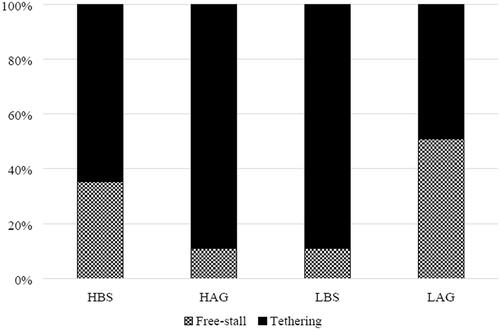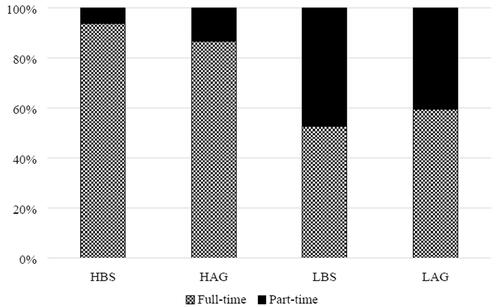Figures & data
Table 1. Classification of resource-based measures and animal-based parameters as potential risk factors.
Figure 1. Frequency of husbandry systems in respective farm category (HBS: High-Input Brown Swiss farms; HAG: High-Input Alpine Grey farms; LBS: Low-Input Brown Swiss farms; LAG: Low-Input Alpine Grey farms).

Figure 2. Business organisation in respective farm category (HBS: High-Input Brown Swiss farms; HAG: High-Input Alpine Grey farms; LBS: Low-Input Brown Swiss farms; LAG: Low-Input Alpine Grey farms).

Table 2. Structural characteristics of investigated farms.
Table 3. Descriptive statistics of veterinary diagnoses.
Table 4. Calculated farm diagnoses incidences for respective farm categories.
Table 5. Descriptive statistics of antimicrobials used in respective farm categories.
Table 6. Risk factor analysis for veterinary diagnoses, considering cattle breed, concentrate feeding level, pasture access, pasture period, farm dimension, business organisation and husbandry system as risk factors.
Data availability statement
The data that support the findings of this study are available on request from the corresponding author, Dr. Thomas Zanon. The data are not publicly available due to privacy.
